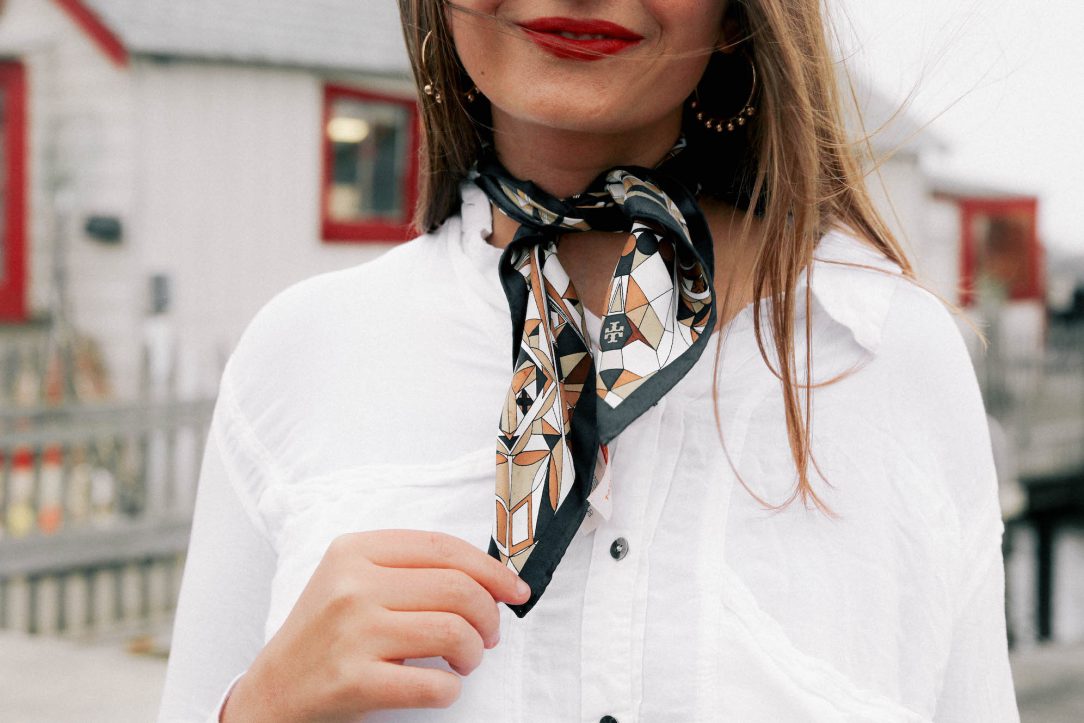Silk scarves were worn by both men and women in the 18th century, regardless of social level. Queen Victoria donned silk scarves when she rose to the throne in 1837. Silk scarves were a symbol of wealth throughout her rule. During the post-war years, they were highly popular. The prints were eye-catching and brought much-needed hope after the war. Queen Elizabeth is devoted to her collection of silk headscarves.
Here are some of the top benefits of wearing a silk scarf
- Silky smooth is more than a phrase. Using silk in your hair may help maintain it silky, nourished, and, most importantly, tangle-free. Unlike cotton, hair will glide on silk, making it considerably less harmful day or night. If you don’t have a silk pillowcase, a silk scarf will suffice. Spread it across your pillow before sleeping to get a similar effect. In addition, resting on silk at night might help keep your hairdo intact. If you don’t have a silk pillowcase, place a silk scarf on your pillow before sleeping to get a similar effect. The most significant benefit of investing in a silk scarf for your hair is that it looks great!
- Cotton friction can irritate your skin and aggravate any pimples you may have, perhaps making them worse. Overnight, cotton absorbs extra moisture and oil from your hair and skin. Silk is significantly softer than cotton. It is made up of long, silky natural strands that are firmly woven together. It helps to reduce skin moisture loss and is better accepted by those with sensitive skin than other materials.

Source: thecoastalconfidence.com
- Silk is resistant to dust, mould, and fungus. Wearing silk is unlikely to cause an allergic response. Silk also has the advantage of being hypoallergenic. Silk is naturally resistant to dust mites, fungi, and mildew, as well as many other allergies. There will no longer be ashes or stuffy noses after wearing a silk scarf. If you wake up sneezing every morning, sleeping on silk may help.
- When it comes to temperature regulation, silk outperforms cotton. Cotton retains all moisture, but silk wicks it away, keeping you dry and cool. Silk is also a very breathable fabric, which is ideal for preventing nocturnal perspiration or feeling hot. Using a silk pillowcase or silk scarf might help offset the temperature of your scalp if you have hair loss due to chemo, cancer, or alopecia. Silk is far superior to cotton in terms of temperature regulation. It is light, breezy, and airy.
- Silk regulates your body temperature, and its smoothness relaxes your nerve system, allowing you to sleep stress-free. If you’ve ever worked with silk, you know how exquisite it feels. When it comes to sleeping, the feel of silk on your skin and hair may make all the difference. After a long day, you deserve a nice night’s sleep, and you should be aware of the exquisite sensation that silk provides. Simply place a silk scarf on your pillow to experience the smoothness of silk on your skin.
- You can truly differentiate yourself from the crowd with all of the fantastic, entertaining designs available on silk scarves. The silk scarf is an excellent investment since it is both modern and timeless, and it can be worn in a variety of situations. Purchasing an authentic silk scarf will last a lifetime, and the material’s quality will demonstrate its worth. Silk textiles shimmer in a way that cotton cannot. Silk scarves are therefore an ideal alternative for displaying vibrant colors and creative designs. Purchasing a silk scarf is absolutely worthwhile!
When searching for a silk scarf, try SCAFOS! SCAFOS provides the appropriate answer whether you are seeking for a scarf for yourself, a meaningful gift for a friend, or scarves in quantity for your company. SCAFOS would like to provide our clients the possibility to design their own scarves. When you design your own silk scarf, you may select the pattern and size that best suits your needs.
Silk Vs Satin
Silk and satin are frequently confused for one another; they appear similar, yet what are the distinctions? The main distinction is that satin is a weave rather than a natural fiber, whilst silk is a natural fabric. Silk is lustrous on both sides, but satin has a glossy front and a drab back. Silk is the oldest fabric, having been developed 12000 years ago in China, but satin was discovered in the medieval ages. It is a tougher fabric than satin and may be hand cleaned, but satin may require dry cleaning. Even though satin and silk are capable of performing the same tasks, their characteristics differ.
Silk characteristics

Source: shopify.com
Silk is a fabric derived from the larvae of silkworms, particularly the Bombyx moi species. Silk was initially reported in China, but it is now manufactured all over the world. Once a highly prized fabric, it is now commonly used for luxury products such as scarves, gowns, household goods, and nightwear. Although China is the world’s leading silk producer, silk is also produced in India, Thailand, and Uzbekistan. Mulberry silk is the most popular because it is the cheapest and easy to produce. Because only the wealthy could afford it, silk became linked with riches.
Pros of silk
Very smooth, delicate, and opulent.
Attractive gleam with a slight rainbow hue
Breathable
Chafing is less likely to occur
Strong and long-lasting
Satin characteristics
Satin fabric, like silk, is typically known and characterized for its glossy sheen. The shimmering material is popular for use in the production of apparel, interior design, and costumes since it is affordable and easy to maintain. Satin is manufactured from either natural or synthetic fibers. The fabric’s thickness will vary based on the fiber composition and level of yarn twist. The satin weave, which originated in China, became fashionable throughout Europe in the 12th century. Because of its extravagant and costly reputation, it was a favorite of royalty. The fiber it contained was responsible for its look. Satin was traditionally made of silk. Because silk is expensive, contemporary satin is usually constructed of synthetic fibers. Both nylon and polyester may be woven into the satin weave to provide a less expensive silk alternative. As a result, most people now see satin as a man-made fabric.

Source: assets.com
Pros of Satin
The texture is wonderful.
Mildew and dust mite resistant
Less prone to abrasion
Less expensive than silk





